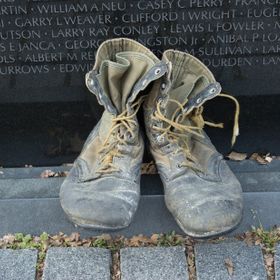
howietenke
FollowCloud to cloud lightening captured during the 30 June 2012 Super Dereco storm in Clarksburg, West Virginia
Cloud to cloud lightening captured during the 30 June 2012 Super Dereco storm in Clarksburg, West Virginia
Read less
Read less
Views
853
Likes
Awards
Member Selection Award
Superb Composition
Top Choice
Outstanding Creativity
Absolute Masterpiece
Superior Skill
Peer Award
Magnificent Capture
All Star
Top Ranks
Categories
Same photographer See allBehind The Lens
Discover more photos See all
Behind The Lens
Location
The image was captured June 29, 2012 from the common balcony on the eleventh (top) floor of the building I live in in Clarksburg, WV.Time
This was between 9:30 and 10:00 in the evening after a Super Derecho Storm had passed through.Lighting
Photographing lightening outdoors like I was can be very dangerous ALWAYS use caution and provide for safety first. Lightening can strike from as far as 10 miles away. If thunder roars go indoors. The only reason I was outdoors shooting this was I had been observing the lightening and over a 30 minute period noticed it had all been cloud to cloud with no ground strikes.Equipment
Canon T3i 18-55mm lens, tripod, cable release Camera settings: 100 ISO at f4.5 Bulb (with 3 second exposures) This was shot #851 of over 1100 exposures I did that night.Inspiration
I have had a love affair with weather since high school in the 70's when I was in Aerospace Education. I love the drama lightening creates at night along with the challenge of just trying to catch it the old fashioned way without using lightening triggers or other fancy equipment. I guess you could say my inspiration started in the 70's trying to capture what I consider the perfect lightening shot on film. 40 some years later I've gone digital but I'm still on the hunt for that "perfect" shot.Editing
I did do some minor contrast adjustment in Photoshop other than that it is as shot.In my camera bag
Canon EOS Rebel T3i Lenses: EF-S 18-55mm f/3.5-5.6 IS II, EF 75-300mm f/4-5.6 III, EF 50mm f/1.2L USM, EF 85mm f/1.8 USM, Bower 500mm f8 (tube), Vivitar Series 1 500mm f8 (mirror) UV,CPL,FLD filters and hoods for all lenses Canon AE-1 (yes I still shoot film) Lenses: Canon FD 35-70mm f/3.5-4.5, Canon FD 70-210mm f/4.0, Bower 500mm f8 Skylight, CPL, UV, FLD filters, Bower DA-5000S flashFeedback
When shooting lightening I can never stress enough SAFETY FIRST. That being said I do a ton of fireworks photography. When the opportunity to shoot lightening at night presents itself I use the same camera settings as I would if I were shooting fireworks with one minor difference; I know when a firework will go off I do not know when the next bolt of lightening will streak across the sky. Sure I could spend all kinds of money on a trigger but where is the fun in that? So what I do is 3 to 5 second exposures based on the amount of light my lens is picking up. The secret lies in ending the exposure once you get a flash of lightening and this principal works for both digital and film. Camera settings: 100 ISO (100 ISO film) Max aperture Bulb setting One other little trick I do is to set my lens to between 35 and 40mm's and the focus to infinity then tape it down before setting it to manual so it stays put. Good luck and safe shooting.













































